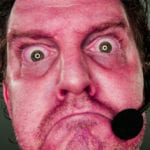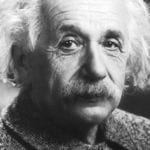 Our World
Our World  Our World
Our World  Miscellaneous
Miscellaneous 10 Intriguing Origins of Popular Carnival Rides
 Weird Stuff
Weird Stuff Ten Unexpected Discoveries Involving Vomit
 Movies and TV
Movies and TV 10 Actors Who Almost Didn’t Take Career-Defining Roles
 Technology
Technology 10 Little-Known Shifts in Computer Science
 Religion
Religion 10 Catholic Histories That Reveal Acceptance of Abortion and Contraception
 Politics
Politics 10 Lesser-Known “First and Only” Facts about U.S. Presidents
 Miscellaneous
Miscellaneous 10 Things You May Not Know about the Fourth of July
 History
History 10 Shocking and Gruesome Founding Father Facts They Don’t Teach in School
 Crime
Crime The Ten Most Vicious Los Angeles Killers
 Our World
Our World 10 Surprising Secrets of Notre Dame Cathedral
 Miscellaneous
Miscellaneous 10 Intriguing Origins of Popular Carnival Rides
 Weird Stuff
Weird Stuff Ten Unexpected Discoveries Involving Vomit
Who's Behind Listverse?

Jamie Frater
Head Editor
Jamie founded Listverse due to an insatiable desire to share fascinating, obscure, and bizarre facts. He has been a guest speaker on numerous national radio and television stations and is a five time published author.
More About Us Movies and TV
Movies and TV 10 Actors Who Almost Didn’t Take Career-Defining Roles
 Technology
Technology 10 Little-Known Shifts in Computer Science
 Religion
Religion 10 Catholic Histories That Reveal Acceptance of Abortion and Contraception
 Politics
Politics 10 Lesser-Known “First and Only” Facts about U.S. Presidents
 Miscellaneous
Miscellaneous 10 Things You May Not Know about the Fourth of July
 History
History 10 Shocking and Gruesome Founding Father Facts They Don’t Teach in School
 Crime
Crime The Ten Most Vicious Los Angeles Killers
10 Dirty Little Secrets About The Experts We Trust
We quote experts and live by their advice, whether it’s the latest medical news, financial advice, or scientific discovery. Just by our actions, we show that we think they’re smarter than us. But a lot of times, we put more faith in these experts than they deserve.
10Forensic Experts Are Misled By False Evidence

Especially after watching TV shows such as CSI, many of us believe that forensic methods are more scientifically precise than they are. Even worse, the findings by forensic experts may be influenced by incorrect information they received about a case, such as a false confession.
The results of a study published in 2011 found that experienced forensics experts such as fingerprint experts and polygraph examiners are often influenced by false confessions when conducting their analyses. Using almost 20 years of data from the Innocence Project, the researchers found that, of 241 people wrongly convicted and later found innocent, one-quarter had been convicted with evidence that included a false confession, either from the defendant or a possible accomplice. Three-quarters were convicted by eyewitness mistakes.
In almost 70 percent of the false confession cases, analysis of other evidence was bungled, too. About two-thirds of the cases started with a false confession that was followed by errors in forensic analysis or testimony from government informants. In other words, the experts learn of the false confession. Then, as they perform their analysis or consider their testimony, they may see what they’re expecting to see: guilt.
An 2009 study by a National Academy of Sciences panel produced more bad news. Expert comparisons of evidence like bullet markings from guns, fingerprints, hair, handwriting, and tire prints are often less scientific than we believe and are sometimes influenced by the examiner’s personal bias. We rarely hear about error rates.
Of course, this doesn’t mean that every conviction is wrong. Still, psychologist Saul Kassin from the John Jay College of Criminal Justice suggests that some errors may be eliminated by reducing the possibility of confirmation bias. For example, when a crime is investigated, forensic experts should be shielded from all evidence except what they are personally examining.
9Judges Are Influenced By Forms Of Evidence And Timing

In Switzerland, a 2013 study of 645 judges found that the way a suspect is interrogated influences a judge’s decision of guilt or innocence, even if the content is identical under the different styles. Judges may call witnesses to testify, but most simply read the interrogation records of criminal suspects because it’s faster.
If a state attorney or police officer was hard-edged and confrontational during an interrogation, the judge was more likely to deem the information as less convincing than evidence obtained during an interrogation with more open-ended questions such as “What do you have to say about this?” But state attorneys and police officers may decide to include or exclude specific elements from transcripts, such as questions, contrary information that is presented later, or the recording of nonverbal cues.
In Israel, a 2011 study found that a prisoner’s chance of being granted parole may be influenced by the timing of the relevant judge’s snack and lunch breaks. If a prisoner’s case was heard right after a break, 65 percent were granted parole. After that, the favorable decisions declined gradually with each subsequent case until the judge had lunch or another snack. After the next break, favorable parole decisions returned to 65 percent. These percentages came from a review of 1,000 parole cases made by eight Israeli judges over a 10-month period.
As one of the researchers explained, “When judges make repeated rulings, they show an increased tendency to rule in favor of the status quo. This tendency can be overcome by taking a break to eat a meal, which is consistent with previous research that demonstrated the positive impact of a short rest and glucose on mental resource replenishment. However, food might not be the only factor; sometimes a mental break can yield a similar result.”
In the US, a 2012 study found that elected Superior Court judges in the state of Washington mete out harsher criminal sentences in the three months prior to their next election as compared with the beginning of their judicial term. These sentences may be as much as 10 percent longer for the felony crimes of assault, rape, robbery, and murder.
8Scientific Experts Commit Error And Fraud
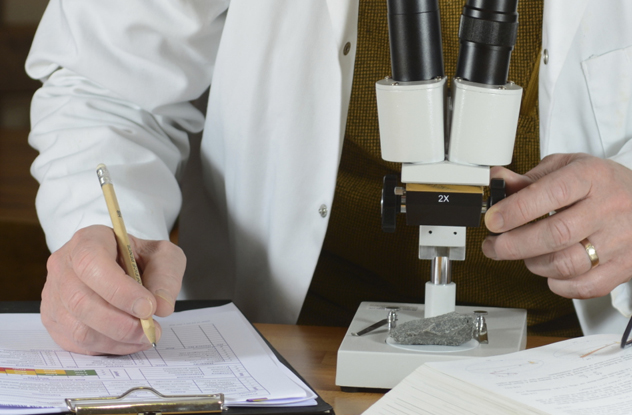
We expect scientists to conduct their research in an unbiased, reasonable way using observable or measurable data. But some of today’s studies contain significant errors, misinterpretations, or downright fraud.
The Washington Post compiled five studies that may fall into this category: faster-than-light neutrinos, arsenic-based life, gravitational waves from cosmic inflation, Goldilocks planets, and STAP stem cells.
In this last one, the journal Nature retracted the papers on STAP stem cells due to plagiarism, errors, alleged fabrication, and the inability of other scientists to replicate the results.
Nature‘s editors described the general problem of scientific inaccuracy and fraud this way: “Underlying these issues, often, is sloppiness, whether in the handling of data, in their analysis, or in the inadequate keeping of laboratory notes. As a result, the conclusions of such papers can seem misleadingly robust. Another contributory factor lies in selection bias behind the data presented, whether implicit because the experiment was not randomized or blinded, or explicit in the deliberate selection of data that, usually with honest good intentions, are judged to be representative.”
Physicist Milton Rothman also complains about the manipulation of statistics when determining how certain diseases are caused. He cites the example of environmental factors as a cause for cancer.
7Science Is Guided By Politics
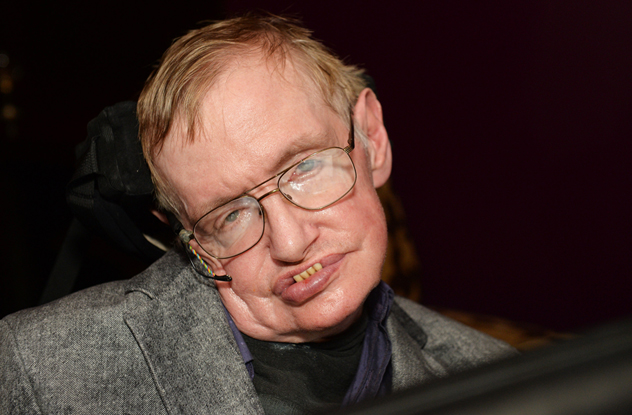
Scientific research is also plagued by a political atmosphere that buries a lot of good ideas and dissenting opinions. In some cases, researchers who go against the norm are ostracized. It’s the scientific equivalent of being shunned by the cool kids at lunch in high school.
One theoretical physicist, Lee Smolin, went so far as to publish a book, The Trouble With Physics, which tackles the issue of favored fields of study in science. His particular problem is string theory. At the time his book was published, he argued that string theory was not testable, that no real progress had been made in years, and that string theorists were so close-minded that they wouldn’t consider other points of view. He was even told that, within the string theory field, he would have to work on popular problems to be accepted by the community.
As Smolin summed up his argument, “The disagreement is not about whether string theory is worth pursuing. It’s about whether it should be the only thing pursued.”
He also revealed that physicists who wanted to study problems that weren’t mainstream often couldn’t get tenure at universities. It seems like the leaders in physics deny revolutionary young thinkers opportunities to pursue other theories. Those who don’t fall in line may even be ostracized.
That’s supposedly what happened to Indian scientist Abhas Mitra, who challenged the powerful Stephen Hawking about the existence of black holes. Mitra published a paper in the Foundations of Physics Letters, a renowned scientific journal, concluding that black holes aren’t real because their existence would conflict with Albert Einstein’s general theory of relativity.
Mitra became a pariah in the scientific community, even with formerly close associates. No one would respond to his paper in writing. Worst of all, the Bhabha Atomic Research Center in Mumbai, where he worked, kicked him out of their theoretical physics division.
Later, Hawking admitted that his original theory was mistaken, conceding that black holes don’t exist “in the absolute sense.” Mitra felt vindicated but was still unhappy with how the scientific community had treated him.
6Statistical Manipulation

If so-called experts in any field want to prove a point that supports their agenda, all they have to do is quote a statistic to back it up. It might make sense, but it also might not.
In his classic book How to Lie with Statistics, Darrell Huff described the process of misinforming other people with statistical manipulation as “statisticulation.” As Mark Twain was credited with saying, “There are three kinds of falsehoods: lies, damned lies, and statistics.”
Experts in almost every field create statistics and quote them. TvTropes.org gives the following example of a misleading statistic. Suppose someone conducts a study on drowning and the sales of Coca-Cola. When the weather’s hot, they see that people are more likely to go swimming and are also more likely to buy Coke. Therefore, they conclude that “Coca-Cola causes drowning.”
Obviously, linking the two events doesn’t make any sense. But researchers often use tactics like that to support their political, social, business, or science agendas. Econoclass.com uses this example of a misleading statistic from an actual study. If researchers find that people who own guns are almost three times more likely to be murdered than people who don’t own guns, does that mean we’re safer if we don’t own guns?
The answer is maybe, but this study doesn’t prove that. Just because more people who own guns are getting murdered doesn’t mean they’re getting murdered because they own guns. Owning a gun doesn’t necessarily cause you to be murdered. It might be the other way around. Maybe these people live in areas or work in occupations where they’re more likely to be murdered. So maybe the greater risk of being murdered is what causes them to buy guns.
Statistics on gun ownership and murder don’t tell us if one causes the other—any more than drinking Coke on a hot day causes you to drown.
5Top Financial Experts Don’t Practice What They Preach

According to Helaine Olen, former financial columnist for the Los Angeles Times, many financial experts on radio and TV aren’t giving good advice. But having a personal financial adviser usually isn’t much better. “Too many financial advisers are really glorified salesman brokers,” she said.
A 2008 study by Harvard professor Sendhil Mullainathan also found that financial planners are often yes-men and -women who tell you to do more of what you’re already doing, even if it doesn’t make financial sense. “There is a need to get business in the door and have that client come back year after year,” says Mullainathan. “So they will avoid the difficult conversation.”
Then there’s the chorus of experts who preach the “buy and hold” strategy for the stock market. According to this advice, you invest in solid companies for decades, often until retirement or beyond. If the value of your portfolio tanks in a market crash, you simply wait it out.
But many of the most successful financial experts don’t practice what’s preached to the rest of us. According to the advice in Jack Schwager’s book The New Market Wizards: Conversations With America’s Top Traders, top money men and women control their risk through money management techniques, which many traders believe are even more important than your trading strategy. One of the top rules is to “predetermine your exit point before you get into a trade.” That means you decide your selling price before you buy, which is completely opposite from buying and holding through a market crash.
Commodities trader Ed Seykota is more direct. He says, “The elements of good trading are: cutting losses, cutting losses, and cutting losses. If you can follow these three rules, you may have a chance.” These traders have a lot of different investing strategies, but most of them don’t buy and hold, especially through market crashes.
4Doctors Diagnose Wrongly Due To Errors In Thinking

According to Harvard Medical School’s Dr. Jerome Groopman, at least 15 percent of us are misdiagnosed by our doctors, and the proportion may be as much as 25 percent. Half of those misdiagnoses result in serious injury or death. Groopman acknowledges that doctors work under enormous time pressure today. Yet he still believes most diagnostic mistakes come from errors in a doctor’s thinking.
In his book How Doctors Think, Groopman outlines at least three ways doctors makes mistakes in their thinking. First, they may make a snap judgment about the diagnosis without listening to everything the patient has to say. “Most doctors, within the first 18 seconds of seeing a patient, will interrupt him telling his story and also generate an idea in his mind [of] what’s wrong,” says Groopman. “And too often, we make what’s called an anchoring mistake—we fix on that snap judgment.”
That means the doctor will only accept evidence that confirms his diagnosis and reject evidence that refutes it. They focus on one possible solution and exclude everything else.
Finally, Groopman says doctors are sometimes influenced too much by a patient’s age, sex, and race when deciding on a diagnosis, even when other evidence points to something else. This often happens to young women with heart disease, who have a seven times greater chance of being misdiagnosed than men of a comparable age.
Computers can sometimes flag test results that need more follow-up or analyze medical records for incorrect diagnoses. Doctors can also use online services to suggest diagnoses when they’re stymied. But Groopman cautions against using statistics as an alternative to a more individualized, human approach. He also strongly recommends to patients that if their doctor doesn’t like them, they go somewhere else.
3Reform Is Ruining Education

More and more US teachers are so disgusted with education reform that they’re publicly lashing out against it. Some—like Gerald Conti, a social studies teacher for 27 years in Syracuse, New York—just quit. He decries standardized testing and STEM, a new educational paradigm that emphasizes science, technology, engineering, and mathematics above all else. He argues that today’s educational system stifles creativity and innovation for both the students and teachers. Conti believes too much of education is now data-driven and oversimplified.
In his resignation letter, which was posted online, Conti let just about everybody have it with both barrels. “In their pursuit of federal tax dollars, our legislators have failed us by selling children out to private industries such as Pearson Education,” he says. “The New York State United Teachers union has let down its membership by failing to mount a much more effective and vigorous campaign against this same costly and dangerous debacle. Finally . . . our own administration has been both uncommunicative and unresponsive to the concerns and needs of our staff and students by establishing testing and evaluation systems that are Byzantine at best and at worst, draconian.”
Teacher Kris L. Nielsen of Monroe, North Carolina, also publicly quit because of “meaningless tests.” But Christine McCartney of Newburgh, New York wrote a different kind of resignation letter. She refuses to leave the classroom, vows to continue as a teacher, but puts everyone on notice that she will no longer be a “silent, complacent bystander, or worse, participant, while you have your way with the American education system.”
In language arts, Common Core requires 70 percent of high school reading to be nonfiction. Great literature is being pushed away. Writing education is also becoming formulaic. According to the new standards, writing must emphasize evidence, not opinion. The reasoning behind this is that students are more likely to encounter informational reading in college and the workplace.
2Discrimination Experts Are Politically Unbalanced
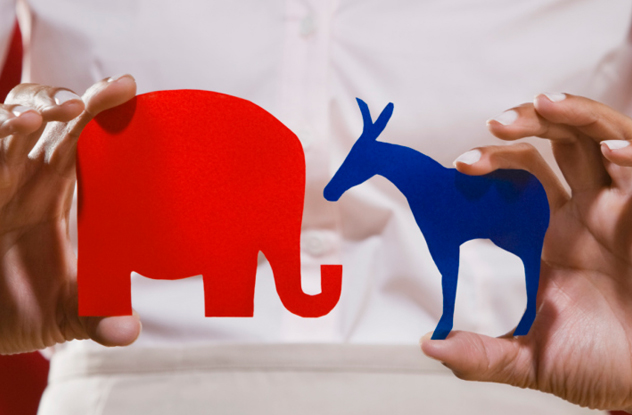
At the 2011 Society for Personality and Social Psychology conference—which presents research on racism, sexism, homophobia, and other threats from stereotyping—social psychologist Jonathan Haidt took a rough poll of the audience’s politics. He found that 80 percent were liberal, almost all the others who responded were libertarians and centrists, and a mere 3 of the 1,000 in the audience said they were conservative.
“Anywhere in the world that social psychologists see women or minorities underrepresented by a factor of two or three, our minds jump to discrimination as the explanation,” said Dr. Haidt, who used to be a liberal but is now a centrist. “But when we find out that conservatives are underrepresented among us by a factor of more than 100, suddenly everyone finds it quite easy to generate alternate explanations.”
One explanation from psychologist Daniel Gilbert is that liberals may be more open to new ideas or more likely to work for small salaries. Or, he said, maybe they’re just smarter. Psychologist John Jost continues the intelligence argument by saying almost all the “best minds in science” agree with liberal ideas on relationships, evolution, mental health, human nature, ethics, and social equality.
Psychologist Paul Bloom explains, “The same people who are exquisitely sensitive to discrimination in other areas are often violently antagonistic when it comes to political ideology, bringing up cliched arguments that they wouldn’t accept in other domains: ‘They aren’t smart enough.’ ‘They don’t want to be in the field.’ ”
Haidt also points out that conservatives are discouraged from entering the field. One grad student, Jose Duarte, believes he was denied admission to another social psychology graduate program because of his political beliefs.
Haidt says this biased behavior mainly affects research on controversial topics.
1Marriage Counselors May Be The Kiss Of Death For Couples

According to William Doherty, director of the marriage and family therapy program at the University of Minnesota, most therapists are lousy at “couples therapy,” or “marriage counseling” as we laypeople call it.
Doherty says that around 80 percent of therapists offer couples therapy, but they have no formal training in the field. He compares it to having a broken bone set by a doctor who never studied orthopedics in medical school. According to data from the New York Times, 25 percent of couples are in worse shape two years after they end their couples therapy. Four years after their sessions end, 38 percent of couples get divorced.
But at least one approach, Emotionally Focused Therapy, claims they’re successful 75 percent of the time.
Dr. Michael Zentman, director of a postgraduate marriage and couples therapy program, explains that the problem occurs because untrained therapists advise couples to work on symptoms like communication. That’s okay in the short term but doesn’t address the real problems underneath a crumbling marriage.
Also, too many therapists focus on keeping the man coming to the sessions because men are most likely to drop out. But that can cause a lot of arguments between the couple on the drive home, especially in abusive relationships. Counselor Steven Stosny tells of one couple who argued so badly, they crashed their car.
Terry Real, an independent clinical social worker, thinks he has the solution. “The traditional, passive uh-huh, uh-huh is useless,” Mr. Real says. “You have to like action. To manage marital combat, a therapist needs to get in there, mix it up with the client, be a ninja . . . It’s frightening to be faced with the force of two strong individuals as they are colliding.”
